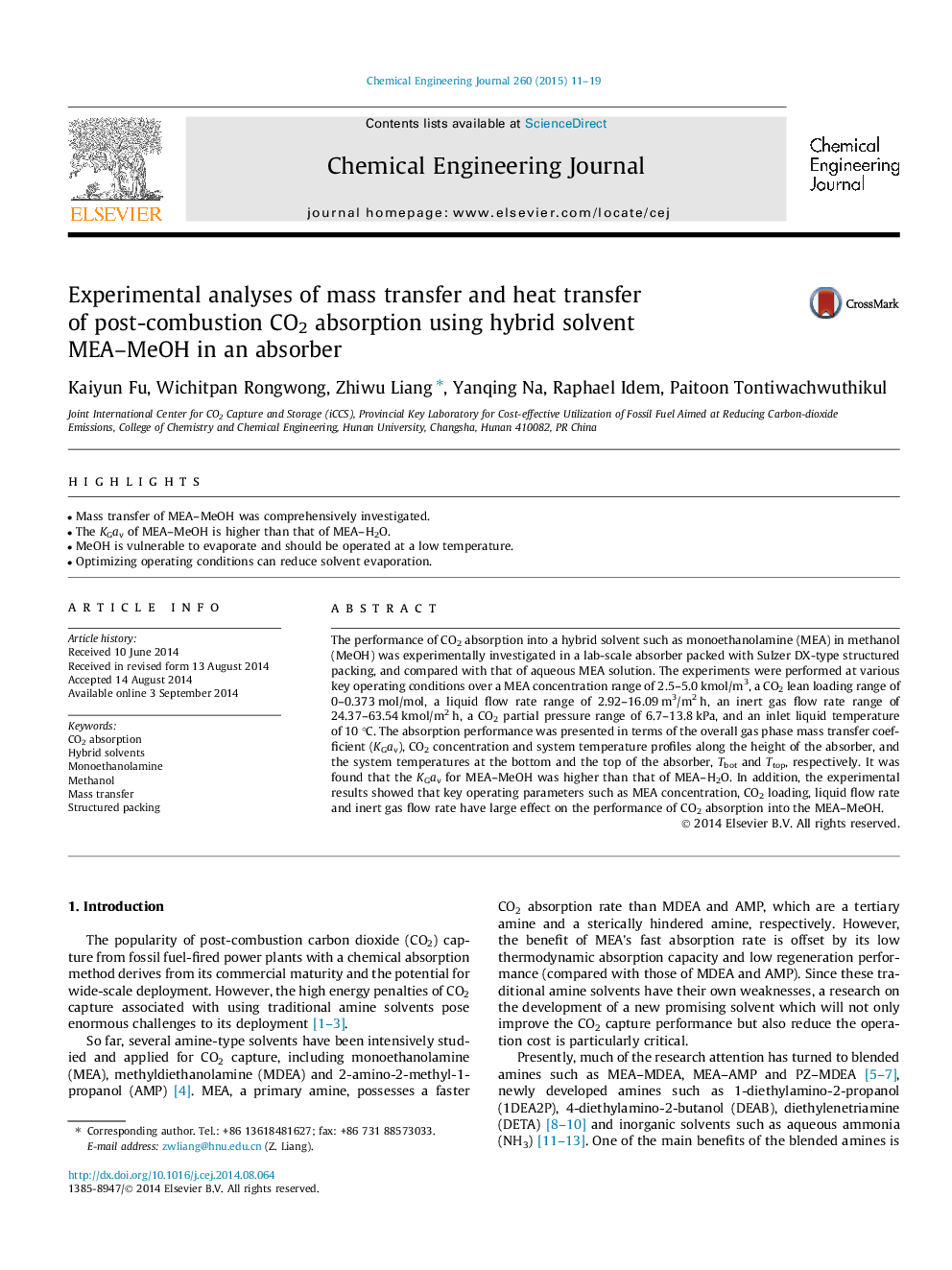| Article ID | Journal | Published Year | Pages | File Type |
|---|---|---|---|---|
| 146725 | Chemical Engineering Journal | 2015 | 9 Pages |
•Mass transfer of MEA–MeOH was comprehensively investigated.•The KGav of MEA–MeOH is higher than that of MEA–H2O.•MeOH is vulnerable to evaporate and should be operated at a low temperature.•Optimizing operating conditions can reduce solvent evaporation.
The performance of CO2 absorption into a hybrid solvent such as monoethanolamine (MEA) in methanol (MeOH) was experimentally investigated in a lab-scale absorber packed with Sulzer DX-type structured packing, and compared with that of aqueous MEA solution. The experiments were performed at various key operating conditions over a MEA concentration range of 2.5–5.0 kmol/m3, a CO2 lean loading range of 0–0.373 mol/mol, a liquid flow rate range of 2.92–16.09 m3/m2 h, an inert gas flow rate range of 24.37–63.54 kmol/m2 h, a CO2 partial pressure range of 6.7–13.8 kPa, and an inlet liquid temperature of 10 °C. The absorption performance was presented in terms of the overall gas phase mass transfer coefficient (KGav), CO2 concentration and system temperature profiles along the height of the absorber, and the system temperatures at the bottom and the top of the absorber, Tbot and Ttop, respectively. It was found that the KGav for MEA–MeOH was higher than that of MEA–H2O. In addition, the experimental results showed that key operating parameters such as MEA concentration, CO2 loading, liquid flow rate and inert gas flow rate have large effect on the performance of CO2 absorption into the MEA–MeOH.
